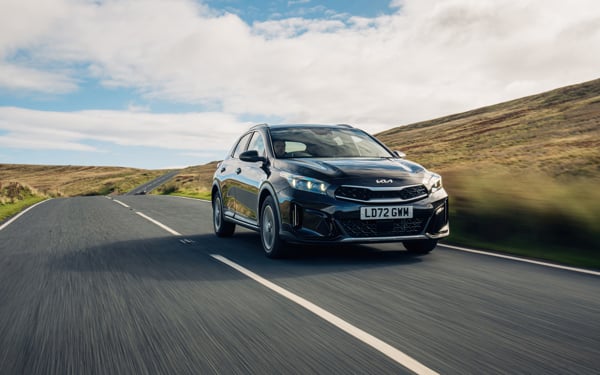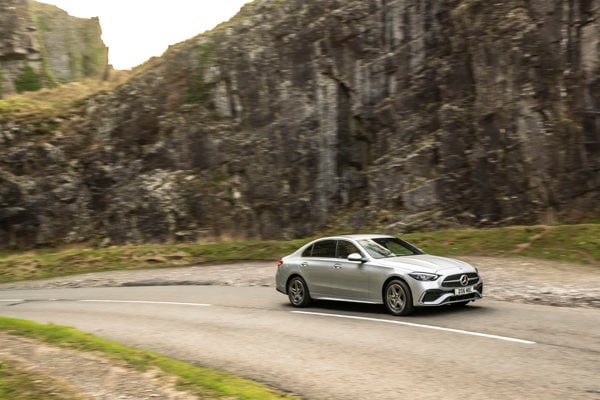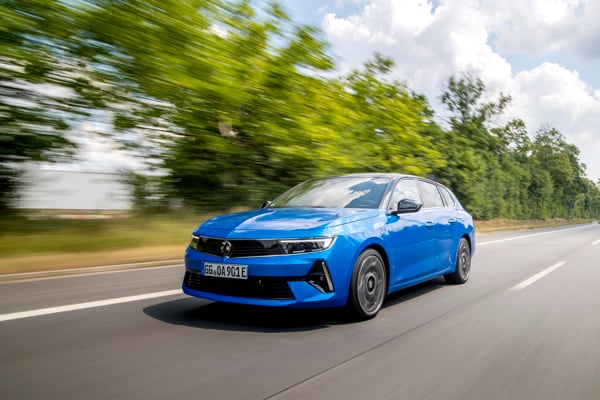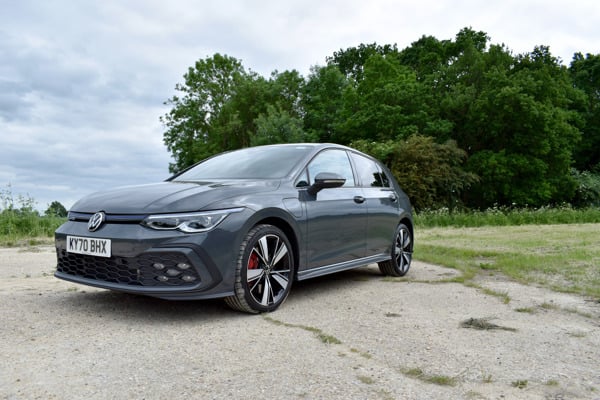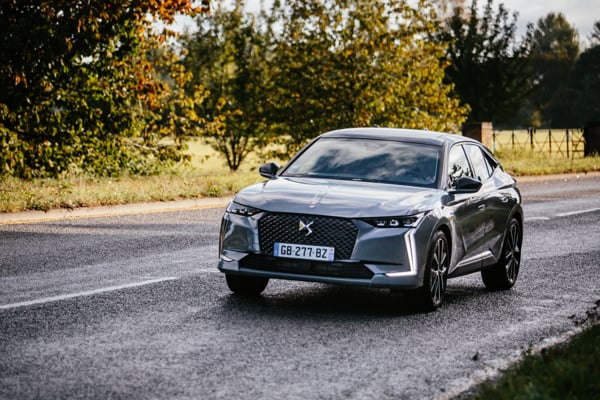Review
The RAC estimates there are now 327,183 plug-in hybrids on the roads and while a hybrid powertrain is considered a perfect stepping stone to EV ownership, this month Fleet News reported that the number of pure battery electric vehicles (BEV) on UK roads has overtaken plug-in hybrids for the first time, however range anxiety, lack or charge points and long charge times are still common problems that may put people off the move to full electric.
The Audi A3 40 TFSIe S Line has been on the Fleet News long term test fleet since March and in the past six months has covered around 1,750miles. The majority of these miles have been made up of shorter trips, enabling us to fully take advantage of the A3’s 37 mile full electric range while also having the reassurance of the 1.4-litre petrol engine. The charge time from a domestic socket is around five hours, which may put off drivers who don’t have access to a fast charger however using the MyAudi app a charge timer can be set to allow it to charge at a time convenient to you.
The Audi sits squarely as a Mercedes A250e rival which we have also tested this year. Both cars offer almost identical engine size, CO2, price and EV only range, both have similar size boots (the A250e is 30 litres larger). Both have similar levels of interior space and comfort for passengers and both offer similar levels of tech. So it really just comes down to personal preference. Where the Mercedes just pips the A3 to the post for us is the upmarket feel and attention to interior detail which offer more of a sense of occasion than the Audi. However, if Sporter handling is important the A3 is a strong choice.
EV range is a realistic 37 miles
Since I took delivery of the Audi A3 plug-in hybrid in March I’ve clocked up 1,682 miles, which have mainly been 12-mile and 19-mile round trips. That’s well within the A3’s claimed 40-mile electric range so I’ve set the A3 to drive on electric only. It’s also possible to set it to auto hybrid (suited to long-distance driving), battery hold (to maintain battery charge) or battery charge (the combustion engine is used to increase the battery charge).
There are other ways to boost the car’s electric range, including putting it in the ‘efficiency’ driving mode and turning the air conditioning off or setting it to ‘eco’.
I tend to have the air conditioning on Eco but prefer the ‘Comfort’ driving mode over ‘Efficiency’ to smooth out the bumps on the rural roads near my house. ‘Dynamic’ (i.e. ‘sport’), ‘Auto’ and ‘Individual’ (i.e. set-up adjusted to personal preferences) are also options.
The available electric range has risen from typically being 34 miles when we first took delivery to 37 miles – three below the official figure for the S line trim with 17-inch wheels. Average short-term consumption is currently 192mpg or 4.3 miles per kWh, while the average long-term consumption is 71.7mpg or 7.2 miles per kWh.
I regularly charge the car using a domestic socket in my garage, which takes about five hours from empty. If I had a 2.9kW wallbox fitted, charging time would be reduced to about four and a half hours.
It’s possible to check the car’s charge level and how long it will take to charge by using the myAudi app.
You can also set a timer for when you want the car to charge. For instance, if you have a cheaper overnight rate from your electricity provider and want to charge your car then.
Interior borrows inspiration from sportier models
The A3 cabin has a striking design which, according to various internet sources, was inspired by the Lamborghini Urus. Comparing the two there are certainly similar design cues, most notable are the steering wheel and the hexagonal vents around the dash although that’s where the main similarities end.
Front passengers get firm sports seats with high side bolsters and adjustable leg supports, for storage there are two front door pockets, a small centre arm rest cubby, space under the dash and the glove box there are also two cup holders and two USB-C charging points. For climate control and driving mode selection Audi have opted for easy to use physical buttons with all other functions such as telephone, navigation and audio controlled via the central 10-inch touchscreen.
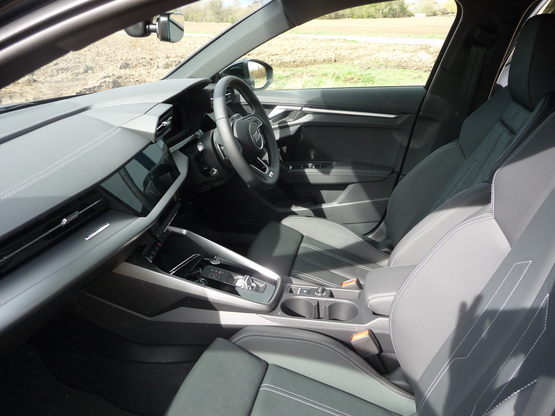
Our model also has the comfort and sound pack (£1,195), which includes parking assist ,Bang & Olufsen Premium Sound System, heated front seats and a reversing camera.
In the back, head room is ample and leg room is adequate for a six-footer although with the centre arm rest/cupholder in the down position it does feel a little cramped. Visability for rear passengers in minimal due to those large high back front seats with built in headrests which add to the enclosed feel. Storage is also tight here with only a small door pocket for each rear passenger...and no rear charging points.
PHEV loses boot space
Our Audi A3 plug-in hybrid has many fine points but boot space isn’t one of them. At 280 litres with the seats up it is 100 litres smaller than the conventionally powered A3 (380l), due to repositioning various bits under the floor to make room for the battery.
While a smaller boot space is par for the course with electric vehicles (EVs), the A3’s boot is still smaller than key rival the Mercedes-Benz A250e, which offers 310l (60l fewer than the conventional A-Class).
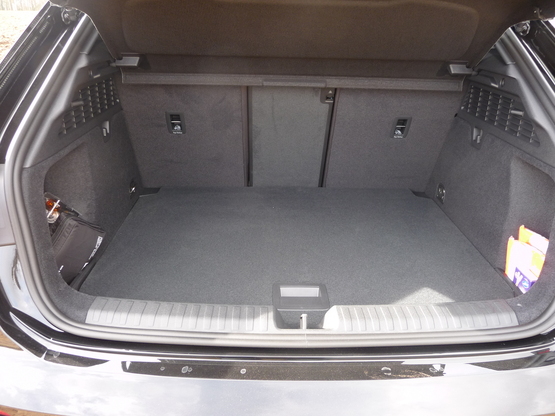
When a week’s family holiday in self-catering accommodation beckoned I made the decision to switch to Audi’s Volkswagen Group stablemate, the Skoda Octavia estate, which we also have on long-term test.
Both cars are based on the same platform and can be chosen with the same engines.
However, our long-term Octavia is the 1.5 TSI and not the plug-in hybrid and its boot is cavernous, offering 640l with the seats up and 1,700 with them folded. This meant it easily accommodated a week’s food shopping, suitcases, pushchair, toys and all the other ‘just in case’ items needed for a holiday with a two-year-old.
Of course, it’s unfair to compare an estate car with a hatchback, especially one that prides itself on practicality, but my situation illustrates the heart versus head scenario that company car drivers can face when selecting their new model.
The A3 is sportier and more desirable than the Octavia but the latter is hard to beat when it comes to space, equipment and value for money. And now that I’m a parent going for the sensible option is becoming the norm.
However, there is an alternative solution. Leasing and car subscription providers can bundle two weeks car hire into an EV contract for the occasions when you need a bigger vehicle or, when it comes to a pure EV, one with a longer range.
Audi A3 40 TFSI e S Line joins our fleet
The A3 Sportback 40 TFSI e is Audi’s entry model plug-in hybrid, replacing the A3 e-tron.
It has a 13kWh battery and electric motor alongside a 1.4-litre petrol, giving it a WLTP-certified range of up to 40 miles in electric mode, combined fuel economy of 282.5 mpg and CO2 of 25g/km.
We’re testing the range topping S Line trim, which would usually be in the 11% benefit-in-kind (BIK) tax bracket, but we’ve opted to ‘downgrade’ the wheels to 17-inch ones so it sits in the 7% band (the same as the Sport model).
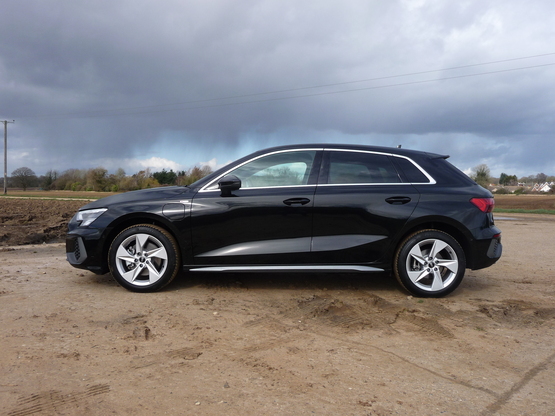
Our model comes equipped with the comfort and sound pack (£1,195), which Audi says brings together some of the most popular options to “offer improved customer value”. These are: parking assist with parking system plus; Bang & Olufsen Premium Sound System with 3D sound; heated front seats; and a reversing camera.
We’ve also specified high beam assist (£100) and Mythos black metallic paint (£575), which complements the black leather sports seats.
On the road the A3 reaches 0-62mph in a brisk 7.6 second and has precise steering but the ride is a little too firm, so I’ve mainly been driving in ‘comfort’ mode.
After 765 miles, the Audi has an average consumption of 71.3mpg thanks to plenty of short journeys. I’ve been regularly charging the car using a domestic socket in my garage, which takes five hours from empty, and typically have an available electric range of 34 miles.
Specs
| Manufacturer | Audi |
| Model | A3 |
| Specification | A3 40 Sportback 5Dr 1.4Te 13kWh 204 SS S line 17in Comfort Sound ST6 22MY |
| Model Year | 0.00 |
| Annual VED (Road tax) | £0 |
| BIK List Price | £38,280 |
| CO2 | 26g/km |
| BIK Percentage | 8% |
| Insurance Group | N/A |
| CC | N/A |
| Fuel Type | Petrol Hybrid |
| Vehicle Type | Small family car |
| Luggage capacity (Seats up) | 5litres |
Running Costs
| P11D | £38,280 |
| Insurance group | N/A |
| Fuel Type | Petrol Hybrid |
| Cost per mile | 85.94ppm |
| Fuel | 7.77ppm |
| Depreciation | 75.47ppm |
| Service maintenance and repair | 2.70ppm |
Rivals
Info at a glance
-
P11D Price
£38,280
-
MPG
282.5 (WLTP) -
CO2 Emissions
26g/km -
BIK %
8% -
Running cost
3 Year 60k : N/A 4 Year 80k : N/A -
Fuel Type
Petrol Hybrid



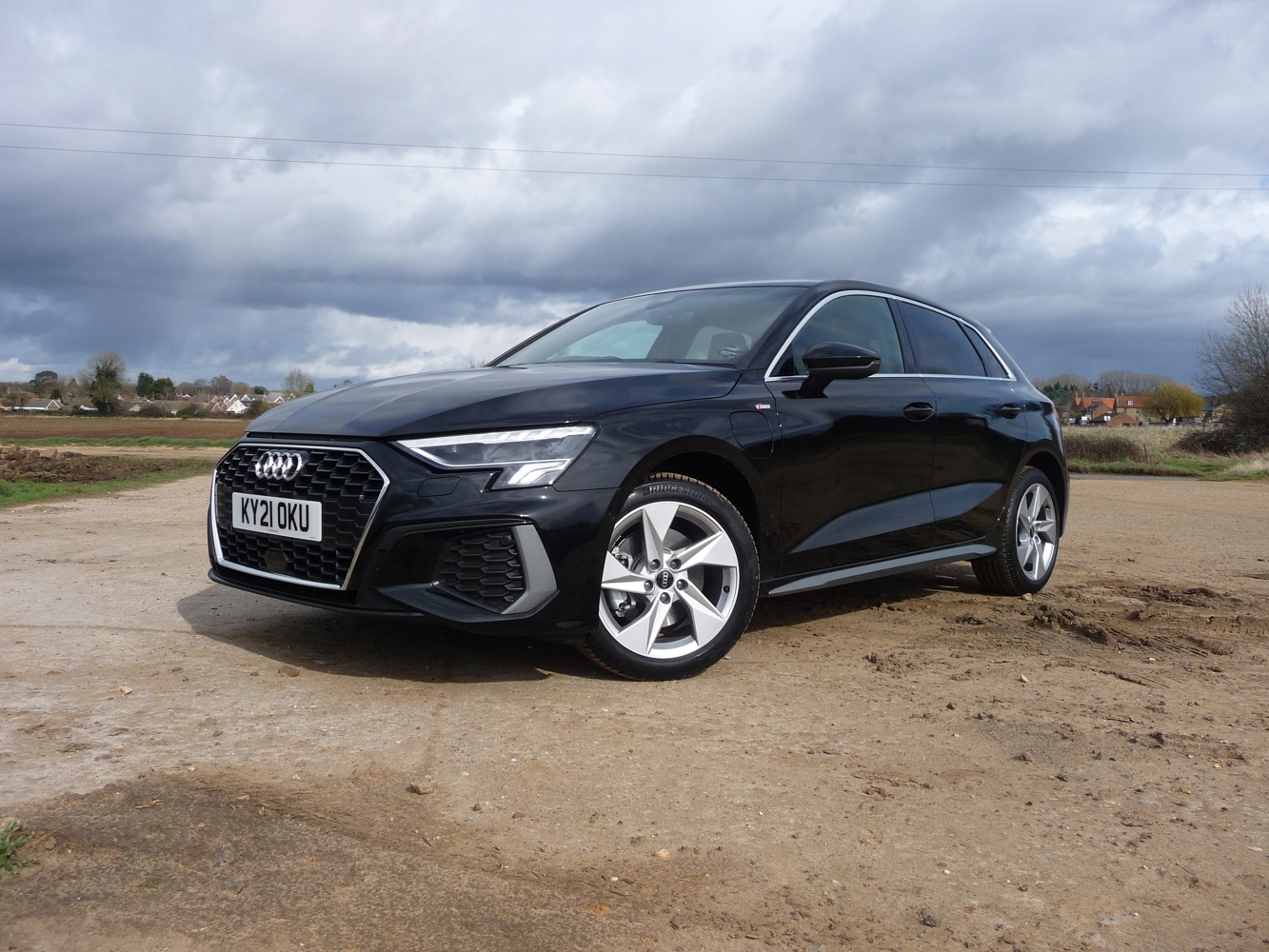
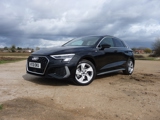
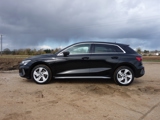


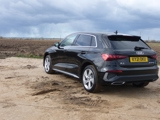
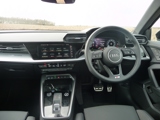
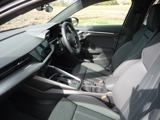
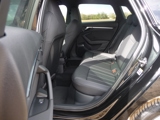
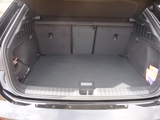



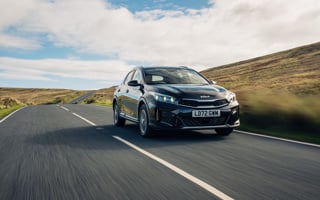
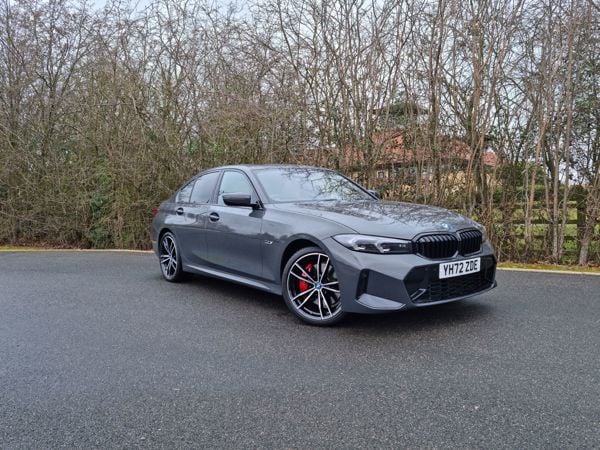
 Petrol Hybrid
Petrol Hybrid
